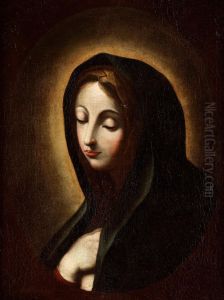Andries Pauli Paintings
Andries Pauli, also known as Andries Pauli or Pauwels, was born in 1600 in Antwerp, which was then part of the Spanish Netherlands. He was a Flemish Baroque painter, primarily known for his still life works and genre scenes. Though not as widely recognized as some of his contemporaries, Pauli contributed to the rich tapestry of Flemish art during the 17th century, a period when the region was renowned for its artistic innovation and excellence.
Little is known about Pauli's early life or training. It is believed that he likely studied art in Antwerp, a city famed for its artists and art institutions, such as the Guild of Saint Luke, to which he belonged. Antwerp at that time was a vibrant artistic center where many artists were influenced by the works of Peter Paul Rubens and other prominent masters. Pauli's style suggests that he was aware of the prevailing trends in Flemish art, including the works of the great still life painters like Jan Davidsz. de Heem and Frans Snyders.
Pauli's career unfolded during a period when the demand for art was extensive, and artists often specialized in particular genres. His still lifes, which often feature tables laden with food, silverware, and glassware, reflect the opulence and abundance of the time. He meticulously rendered the textures and surfaces of various objects, displaying his skill in capturing the interplay of light and shadow. Unfortunately, fewer works by Pauli survive, and as a result, his oeuvre is not as well documented as that of some of his peers.
Pauli's life was relatively short; he died in 1639, at the age of 39. The circumstances of his death are not well-recorded, which is the case with many details of his life. Despite the scarcity of biographical information, Pauli's existing works attest to his ability as an artist and his contribution to the Flemish tradition of painting. His paintings today are considered valuable examples of early 17th-century Flemish art, and they can be appreciated for their technical skill and historical significance.
